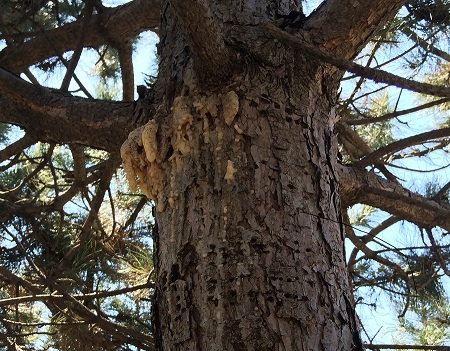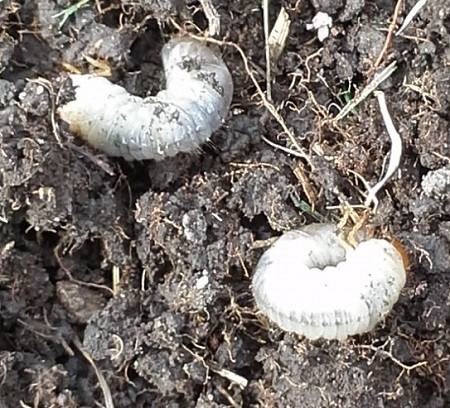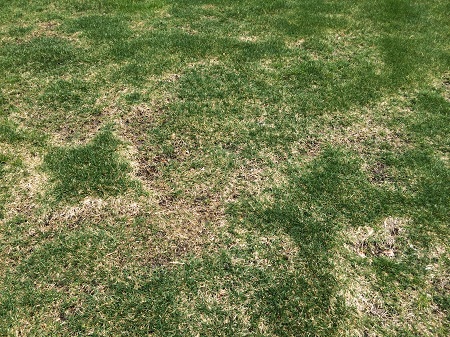
Insect & Disease
Snow Mold Lawn Disease
Snow mold is a fungal disease that appears in lawns in early spring as the snow melts. There are two types of snow molds that become active under the snow cover, gray and pink. Gray snow mold (also called Typhula blight) is caused by Typhula spp., while pink snow mold (also called Fusarium patch) is caused by Microdochium nivalis.
Symptoms first appear in the lawn as circular, straw colored patches when the snow melts in the spring. These patches continue to enlarge as long as the grass remains cold and wet. Grass within the patch often has a matted appearance and colored fungal growth. The fungal growth may cover the entire patch or develop along the margins, with gray snow mold being white to gray in color and pink snow mold being white to pink in color. Occasionally, fungal fruiting bodies (mushrooms) may be seen emerging from infected turf. Hard structures, called sclerotia, may also develop on the leaves and crowns of plants infected by gray snow mold, not pink. The sclerotia are spherical in shape and roughly the size of a pinhead. Their presence helps to distinguish gray snow mold from pink snow mold.
Gray snow mold survives hot summer temperatures in the soil or in infected plant debris as sclerotia, resistant fungal structures, while pink snow mold survives as mycelium or spores in infected plant debris. Fungal growth begins in the winter, beneath a cover of snow on unfrozen ground. Growth can take place at temperatures slightly below freezing and may continue after snow melt, as long as the grass remains cool and wet. Gray snow mold activity stops when the temperature exceeds 45° F or the surface dries. Pink snow mold activity may continue during wet weather in the fall and spring, as long as the temperature is between 32° F and 60° F.
Snow molds do not occur in the home lawn every year, but are most common during years when an early, deep snow cover prevents the ground from freezing. A cold, open winter will not promote snow mold, but may cause winter injury. The damage caused by snow molds is seldom serious. Generally, infected areas are just a little slower to green up. Gently rake affected areas of the lawn to promote drying and prevent further fungal growth. Fungicides are not usually recommended, but in severe cases a preventative spray in October or November may be helpful.
Steps to minimize Snow Mold damage:
· Avoid excessive applications of nitrogen fertilizer in the fall.
· Continue to mow the lawn at the recommended height until it is no longer actively growing. The taller the grass, the more likely it will mat down and encourage snow mold development.
· Rake up leaves in the fall.
· Manage the thatch layer to avoid accumulations of more than ½ inch.
· Spread out large snow piles to encourage rapid melting. Use snow fencing to minimize snow accumulation in problem spots.
Zimmerman Pine Moth

Grub Control
 One of the most insidious insects to infest a lawn are the larva of the Japanese Beetle and Chafers, also known as Grubs. Grubs live in the top 3-4 inches of soil under your lawn and feed on the roots of all types of grasses. You can typically find these grubs during the late spring and early summer as well as in the fall, but they are also there hibernating in the winter, but doing no damage during this period.
One of the most insidious insects to infest a lawn are the larva of the Japanese Beetle and Chafers, also known as Grubs. Grubs live in the top 3-4 inches of soil under your lawn and feed on the roots of all types of grasses. You can typically find these grubs during the late spring and early summer as well as in the fall, but they are also there hibernating in the winter, but doing no damage during this period.
Often you won't even know you have a problem with grubs until it is too late.


